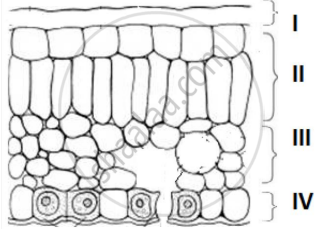Advertisements
Advertisements
प्रश्न
Which one of the following has cytoplasm but no nucleus:
विकल्प
Xylem vessel
Sieve, which has a tube
tracheid
Companion cell
उत्तर
Sieve tube
Sieve tube, which forms the phloem, are living cells containing cytoplasm but no nucleus.
APPEARS IN
संबंधित प्रश्न
What is the name of tissues which transport food in a plant?
What substance/substances are transported in plants by sieve tubes (or phloem)?
State the term used for the transport of food from leaves to other parts of plant.
What is xylem tissue? Name the two kinds of cells in xylem tissue. State whether these cells are living or dead.
What do you mean by 'translocation' with respect to transport in plants?
In autotrophs, water is transported through:
The transport system in plants consists of two kinds of tissues X and Y. The tissue X is made up of living cells and consists of two components A and B. The component A has tiny pores in its end walls and contains only cytoplasm but no nucleus. On the other hand, component B has cytoplasm as well as nucleus. The tissue Y is made up of dead cells and consists of two components C and D. The component C has open ends whereas component D does not have open ends. In flowering plants, either only C or both C and D transport water but D is the only water conducting tissue in non-flowering plants.
(a) What is (i) tissue X (ii) component A, and (iii) component B?
(b) What is (i) tissue Y (ii) component C, and (iii) component D?
Water and dissolved minerals get into the root hair of a plant by a process called A and enter the conducting tissue B. The process C helps the water and dissolved minerals to move up through tissue B in roots and stem, and reach the leaves of a plant. In the leaves, food is made by a process D. This food is then transported to all the parts of a plant through tissue E. The process of distributing food made in the leaves to all the parts of the plants is called F.
(a) What are (i) A (ii) B (iii) C (iv) D (v) E, and (vi) F?
(b) Which tissue is made up of living cells: B or E?
(c) Which tissue, B or E, contains sieve tubes?
(d) Which tissue, B or E, contains tracheids?
The form of sugar transported through the phloem is glucose.
In the given transverse section of the leaf identify the layer of cells where maximum photosynthesis occurs.

